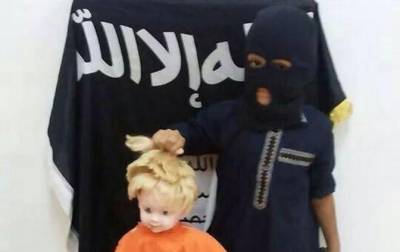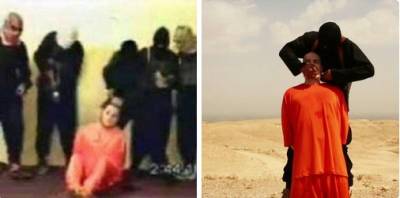The Overlooked Goal of the Islamic State’s Beheading Video: Recruitment

The Islamic State's (IS) released video showing the beheading of American photojournalist James Foley has a straight-forward purpose from an analytical standpoint: intimidation. The brutality demonstrated in the video says, "Don't mess with us." Simple. Beyond the surface level, however, there is an equally alarming element to this video: recruitment to jihad.
Of course, while anyone with a sliver of morality and a functioning stomach couldn't possibly register any such appeal, a dangerous community with a dark view of the world have interpreted the video in a celebratory and empowering vein.
Jihadi groups need the support of the greater jihadist community; without such support, they cannot exist. Therefore, while it is important to carry out attacks, it is equally important to promote and propagate them. In fact, of all the jihadi groups, IS invests the most effort in recruitment, with a special emphasis on foreign fighters. An indication of the video's recruitment element is the fact that IS chose, from all their media outlets, to distribute the video through al-Hayat Media Center, their leading media arm for Western recruitment. Al-Hayat regularly releases videos and other materials in many Western languages, including English, German, and French. Content released from al-Hayat has included the posthumous video of Canadian jihadist "Abu Muslim," an English-language magazine called "Dabiq," and promotion videos from foreign fighters spanning from America, Britain, Australia, and Germany just to name a few. Evident to al-Hayat's success is the high number of foreign fighters leaving their lives in the West behind and joining the lines of IS.
The executer, a masked man with a British accent, also doubles as further recruitment appeal in himself.
The executer, a masked man with a British accent, also doubles as further recruitment appeal in himself. Prospective jihadists from the West, as is well-illustrated on social media, are now watching this video and seeing life under IS as something they could be a part of—a community comprised of people with the same backgrounds as them who heroically fight the enemies of Islam. More, it also serves to project for IS a vast global presence, thus legitimizing their established Caliphate and agenda to their jihadist audience. Excitement over the man's accent was expressed on a prominent English jihadist forum, Ansar al-Mujahideen, wherein a user stated:
Did you hear, maa Shaa' Allah [God has willed], the mujaahid brother who slaughtered the American has a London accent!!
Cameron's going to have many sleepless nights, not to mention Obama and the Americans too
Indeed, the reaction on social media by jihadists and IS supporters has been overwhelmingly celebratory—showing a palpable consensus that Foley's death was both an inspiration and victory against years of drone strikes on jihadists. Just minutes after the video was released, hundreds of tweets with links to the video and images of the beheading flooded Twitter. New hashtags like "#NewMessageFromISIStoUS," "#AmessageToAmerica," and #USgovKilledJamesfoley were created to unify the conversation while IS-supporting users expressed joy over the video.
One user tweeted a link of the video and insisted that other IS supporters to "Search, enjoy, and spread" the video. Another user tweeted, "Did you see what we can do ? There is more !!" Similarly, another IS supporter tweeted:
I was happy to see the beheading of that kaafir, I just rewinded to the cutting part..Allahu akbar!
I wonder what was he thinking b4 the cut.
Illustrating the great impact and the pride within the jihadi community, another user implied the beheading to be a defining moment in the jihadist cause, stating, “The honour of the ummah [nation] is coming back.” To the same note, another account stated that “Dawla's [IS] war with the US is sowing the ranks of the mujahideen back together.”
Twitter users also went as far to upload pictures of the beheading to their profile pictures. One user even covered both his profile picture and banner space with artwork made from the video:

Also interesting is the resemblance of this video to the 2004 beheading of American Nick Berg—carried out by Abu Musab al-Zarqawi, leader of IS's predecessor, al-Tawhid wal-Jihad—is striking. Both Berg and Foley were wearing orange jumpsuits and both were beheaded with similar-looking knives. However, Foley's execution video shows the masked fighter making the initial incision into Foley's neck, at which point the video cuts straight to a shot of his dismembered body set on the ground. Berg's video, conversely, showed the entire act.

Hence, killing requires compassion and must not seek torture. The use of a sharp blade, including the sword, is therefore required.
Foley's beheading video was tactically edited to intimidate Americans and Westerners while also appealing to prospective recruits. By not showing the actual beheading, IS is making a safe play to terrorize the Western community while making the video a blockbuster within the jihadi community.
As we witness what appears to be a mirrored execution to that of Berg in 2004, we must not make the error of thinking that this is merely history repeating itself.
It would be a mistake let this this heinous video—which undoubtedly aims to recruit as it does terrorize—pass through the national conversation without addressing the underlying concern it brings forth: we are fighting a much different war than we were a decade ago. As we witness what appears to be a mirrored execution to that of Berg in 2004, we must not make the error of thinking that this is merely history repeating itself.
What we face here—with the sophisticated social media campaign, high appealing messages, and vast distribution channels of IS and its supporters—is something entirely new. IS has been largely successful in bringing their message into tens of thousands of households in the West and elsewhere. And it is no secret that the goal of jihadist groups like IS are not only to recruit fighters with such media, but to radicalize them remotely—creating sleeper cells of terrorists with the necessary planning and information to strike their home countries from within.
Meanwhile, the rhetoric around how to respond to the killing of Foley has revolved solely around if, when, and where to bomb. It is time for the US and other countries to understand that the jihadi threat must be fought not only in Iraq, Afghanistan, Somalia, or Yemen, but also online.
